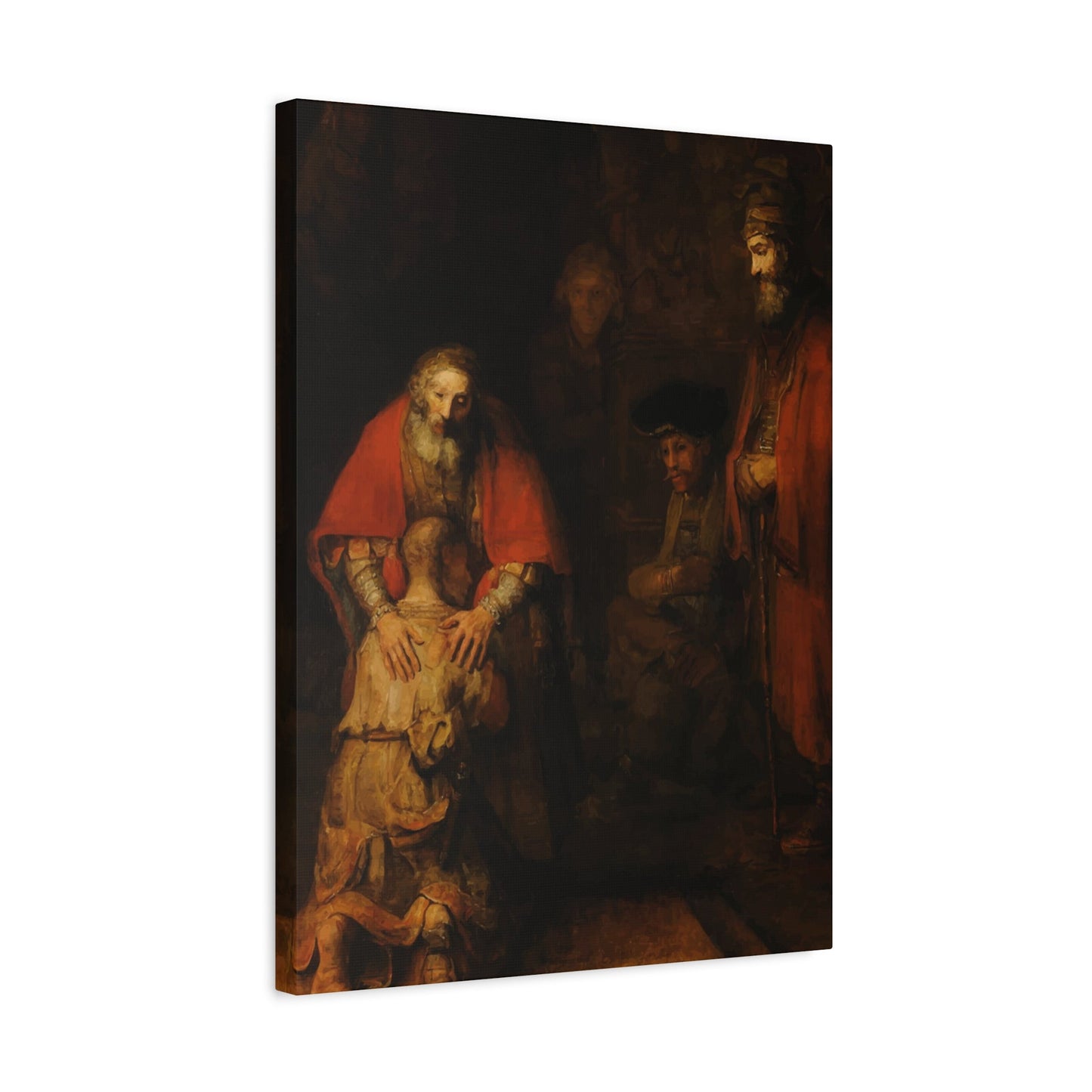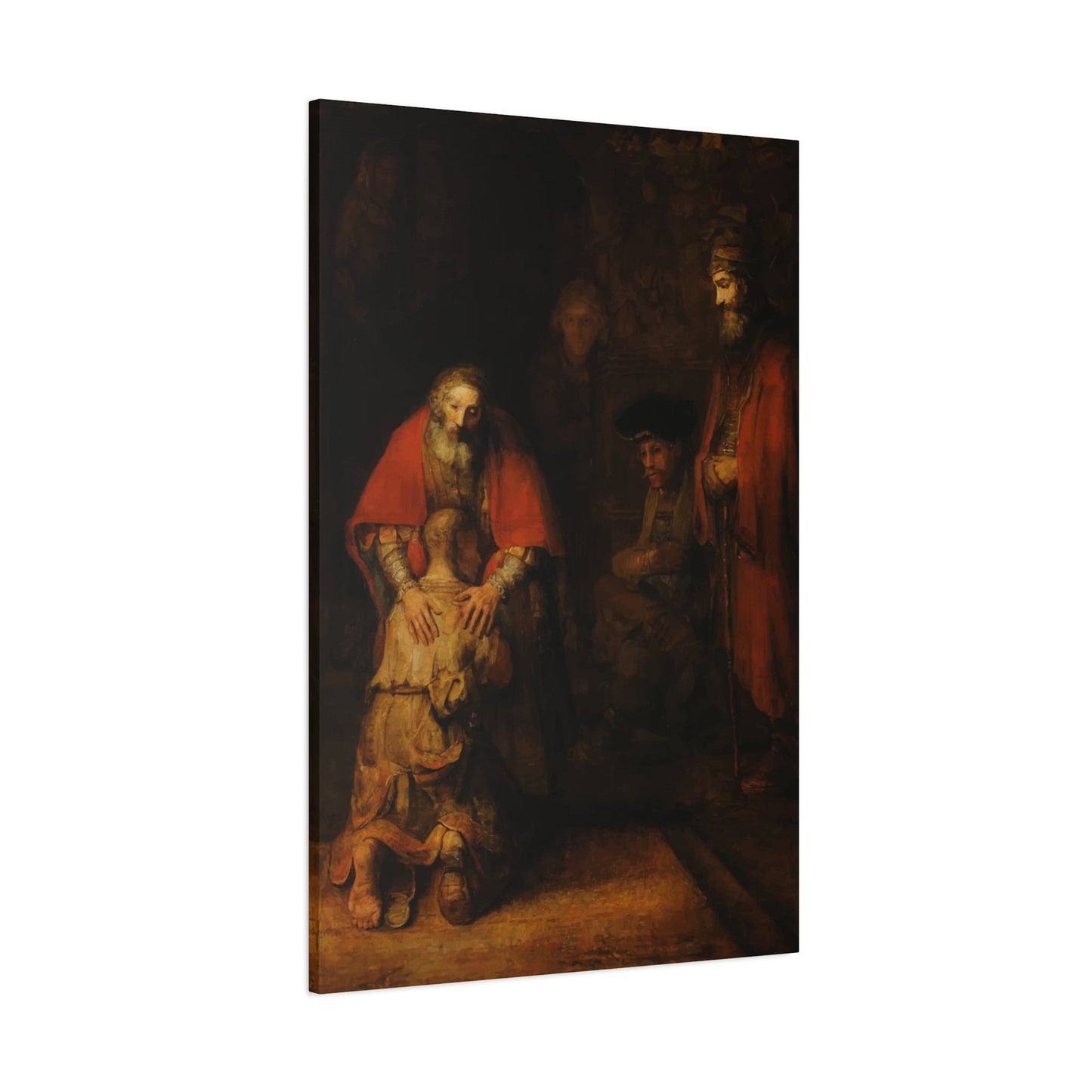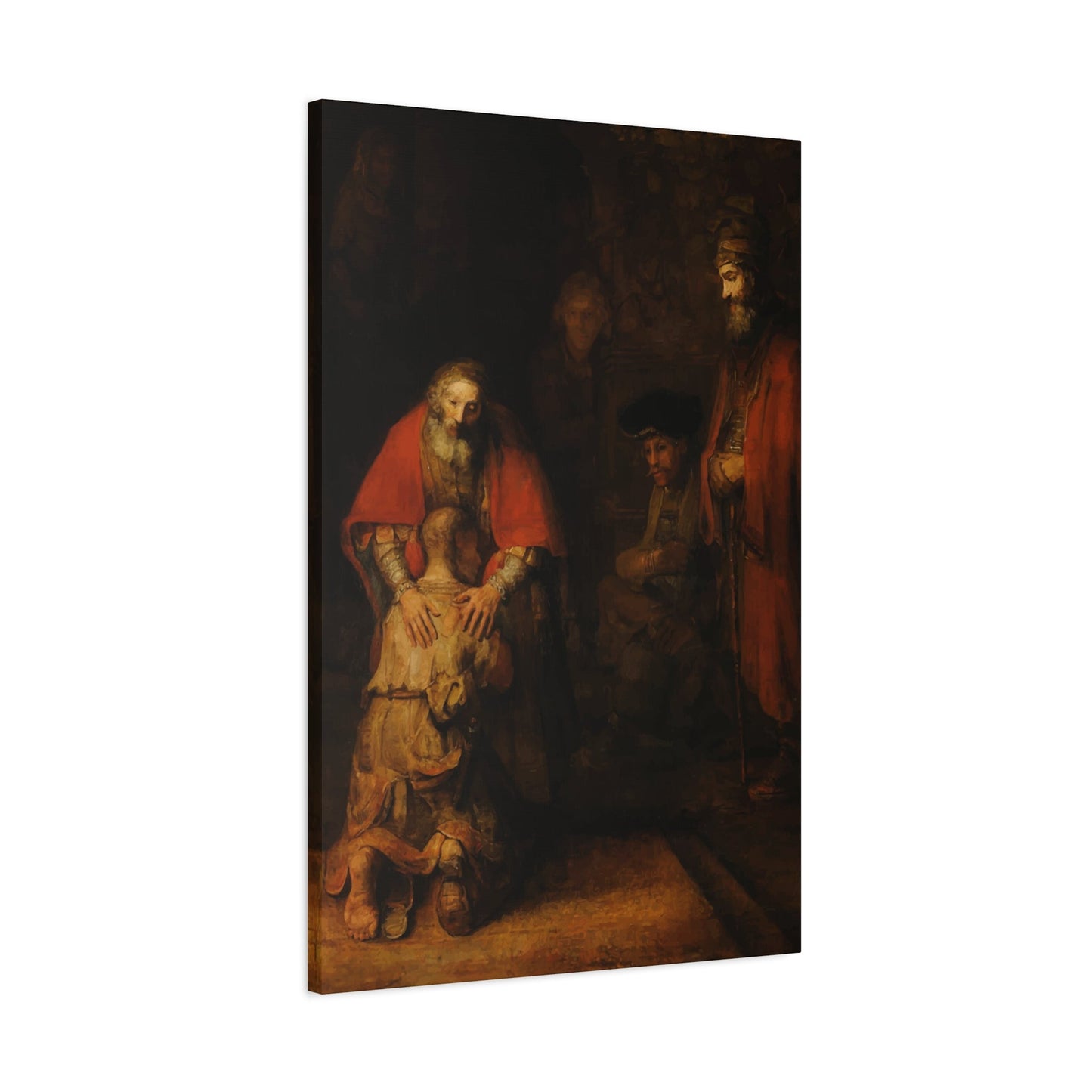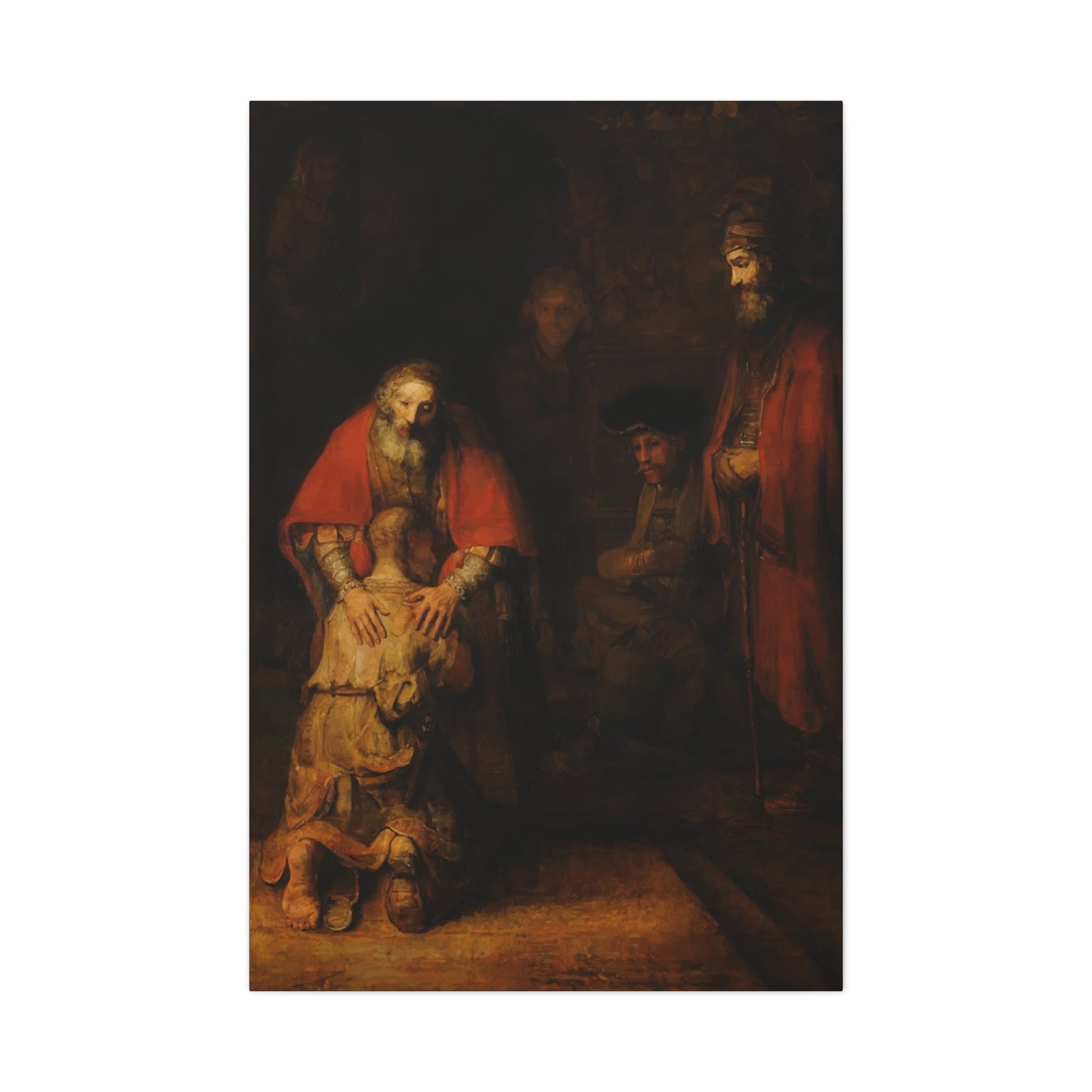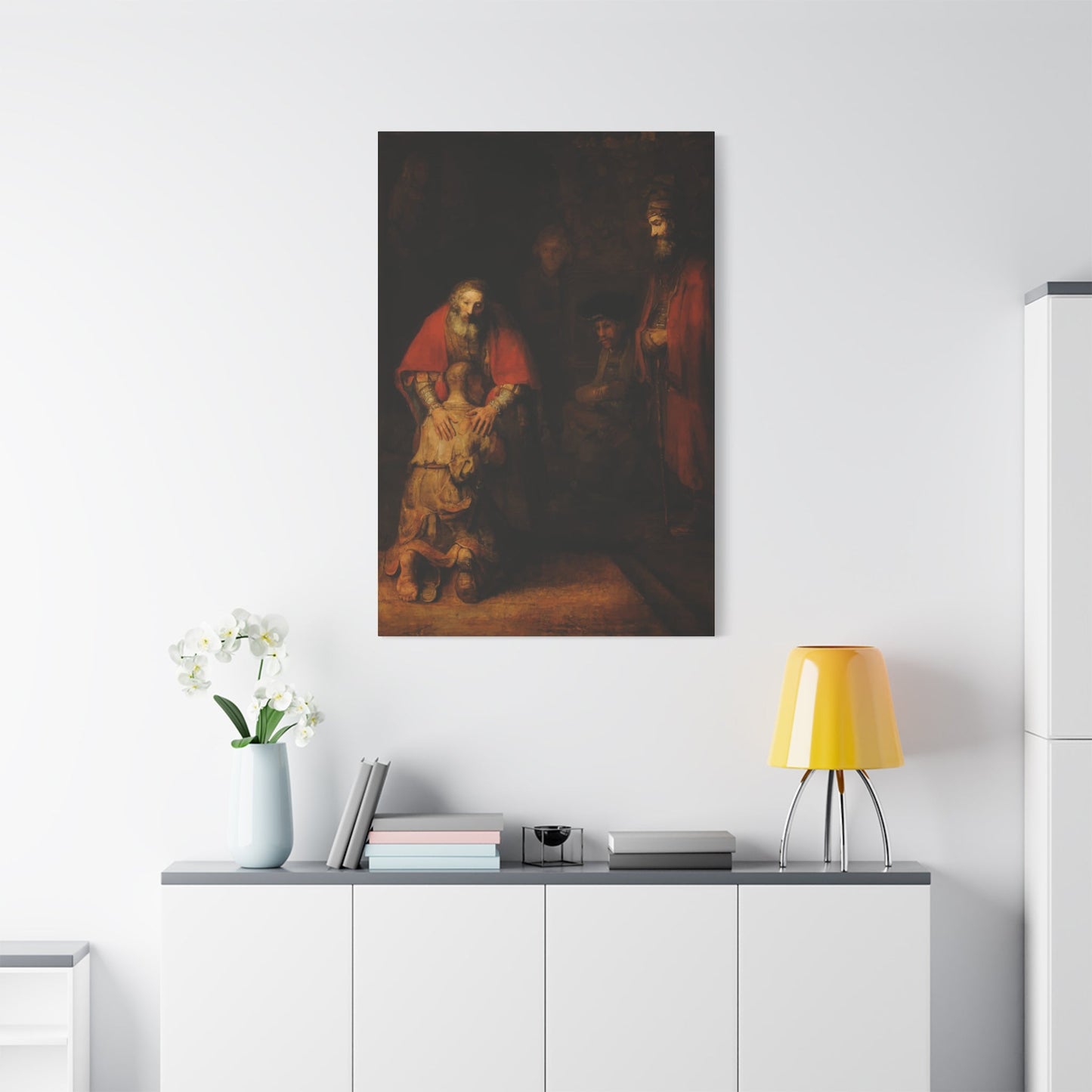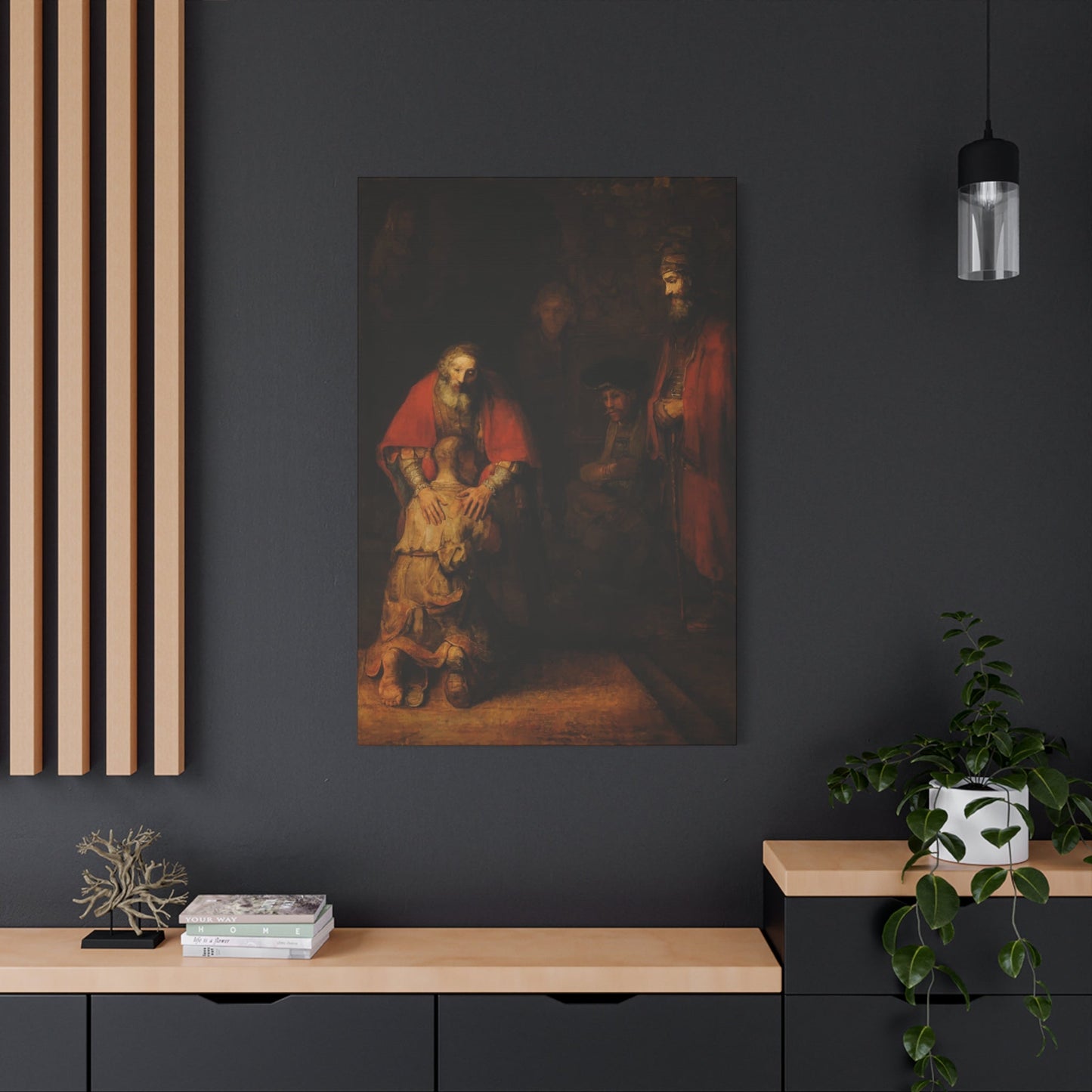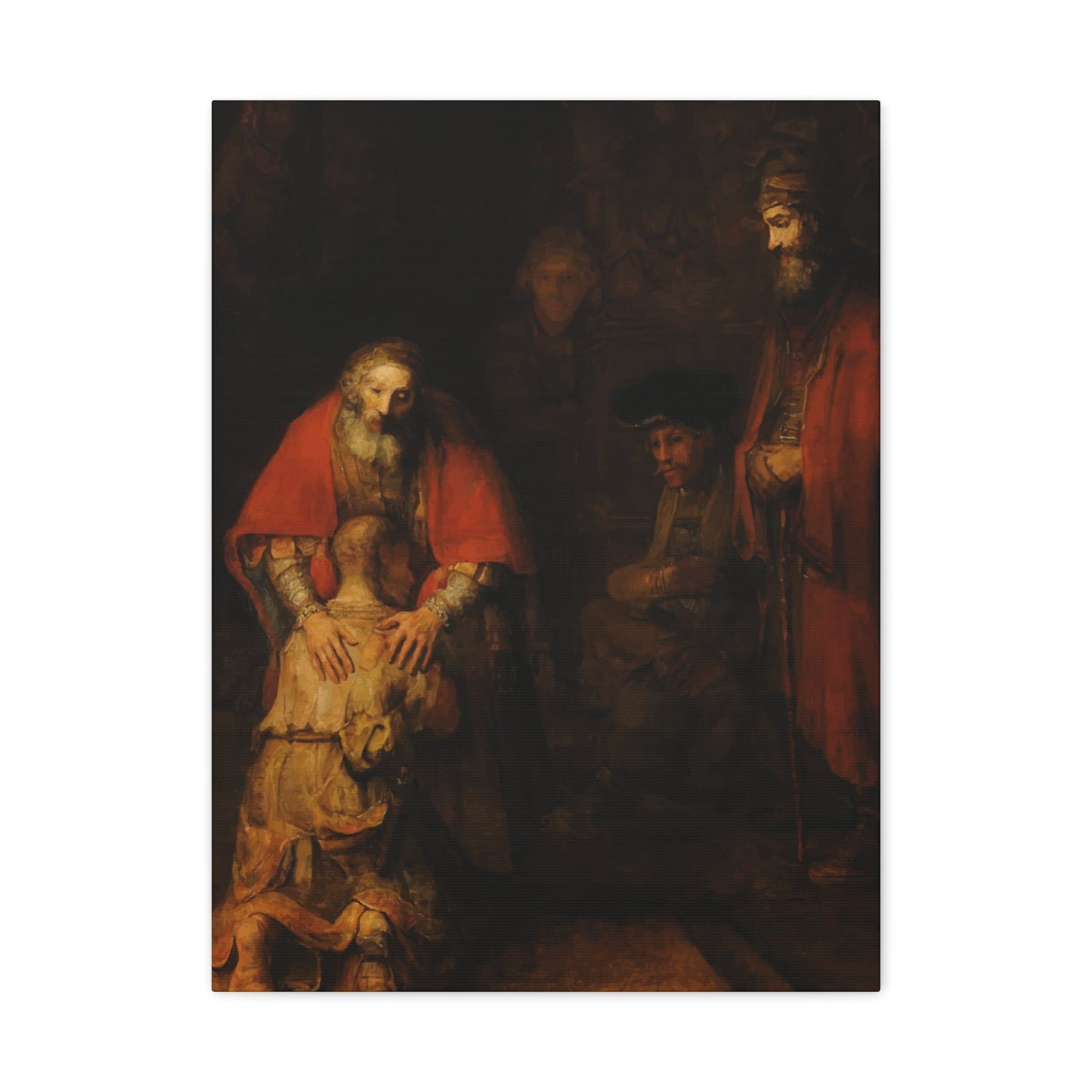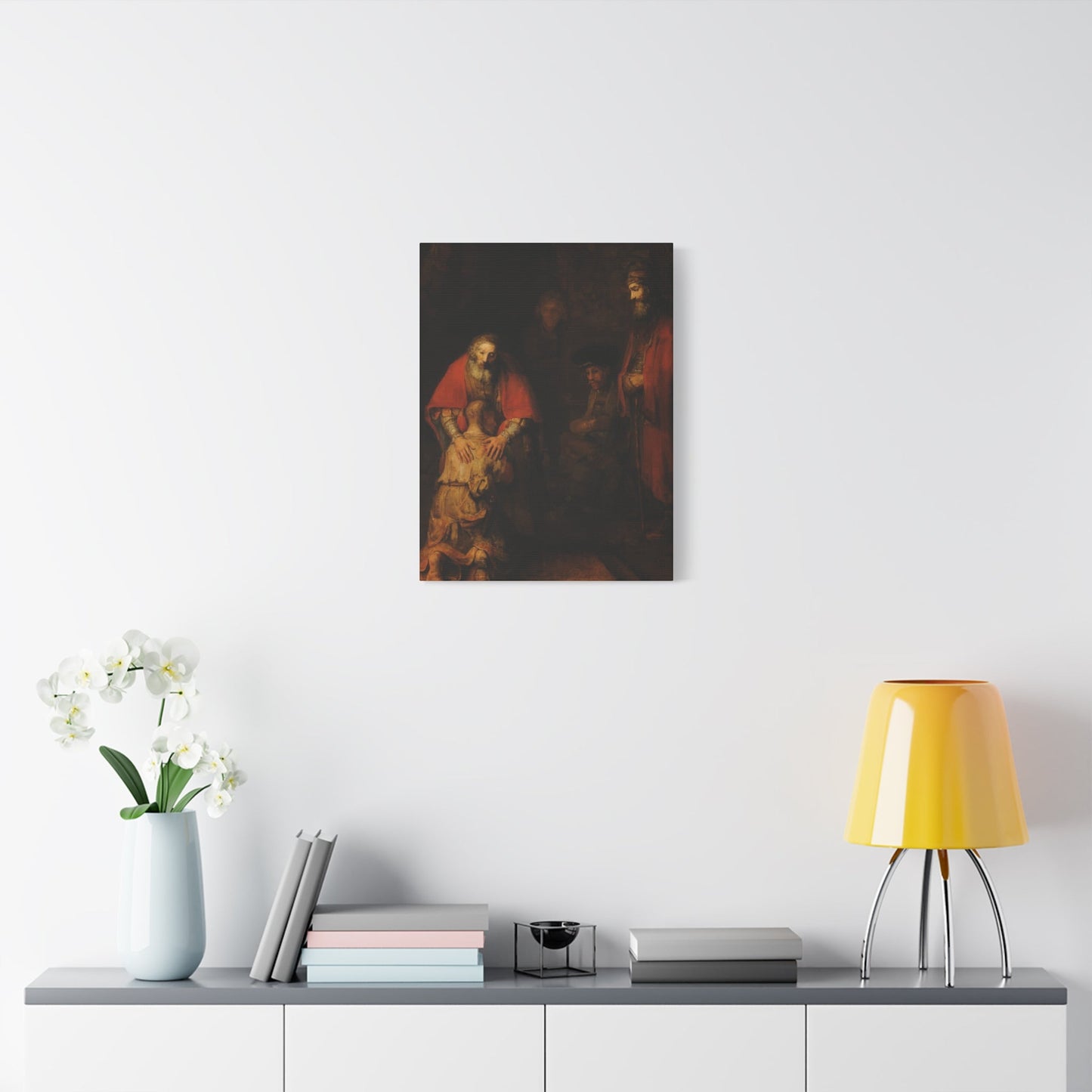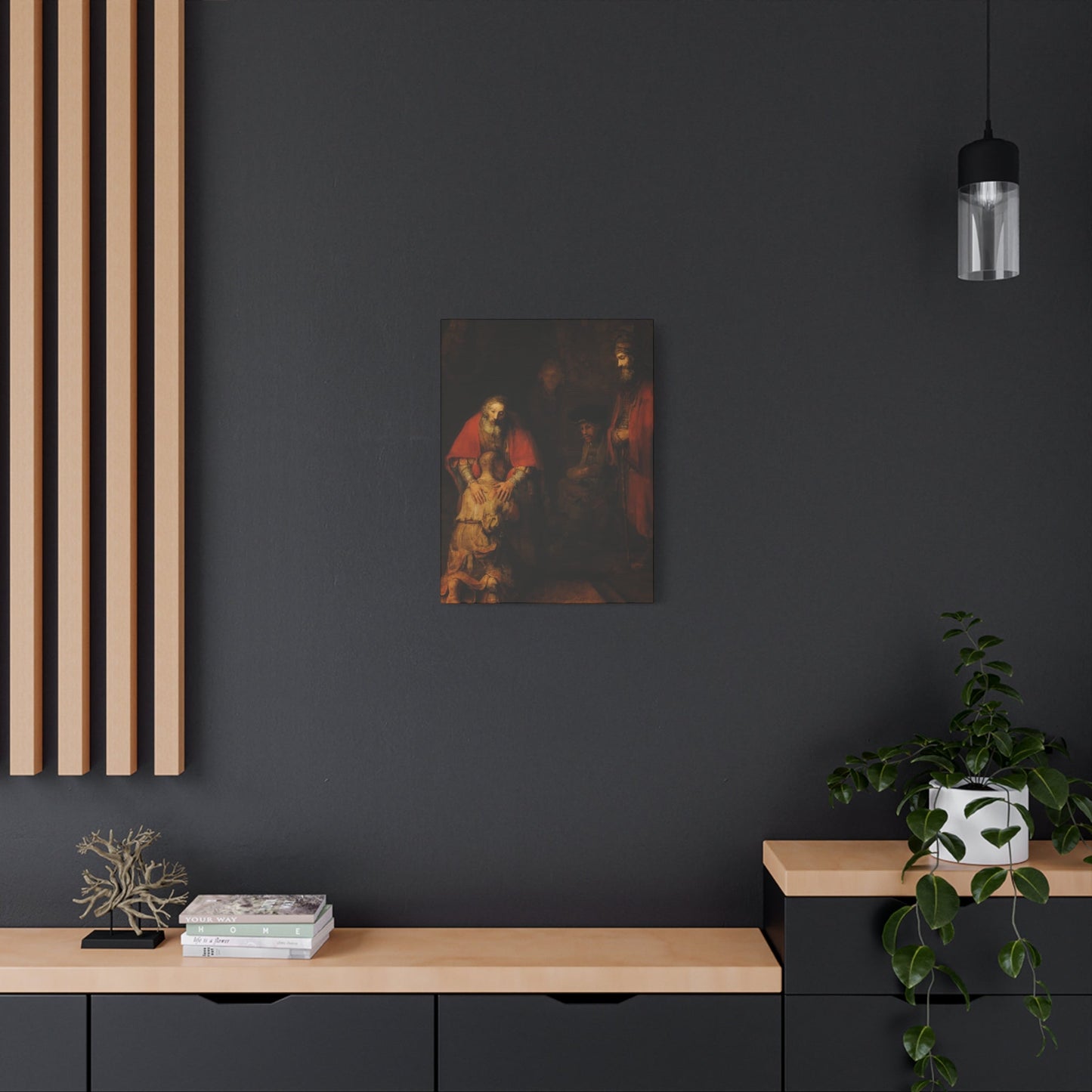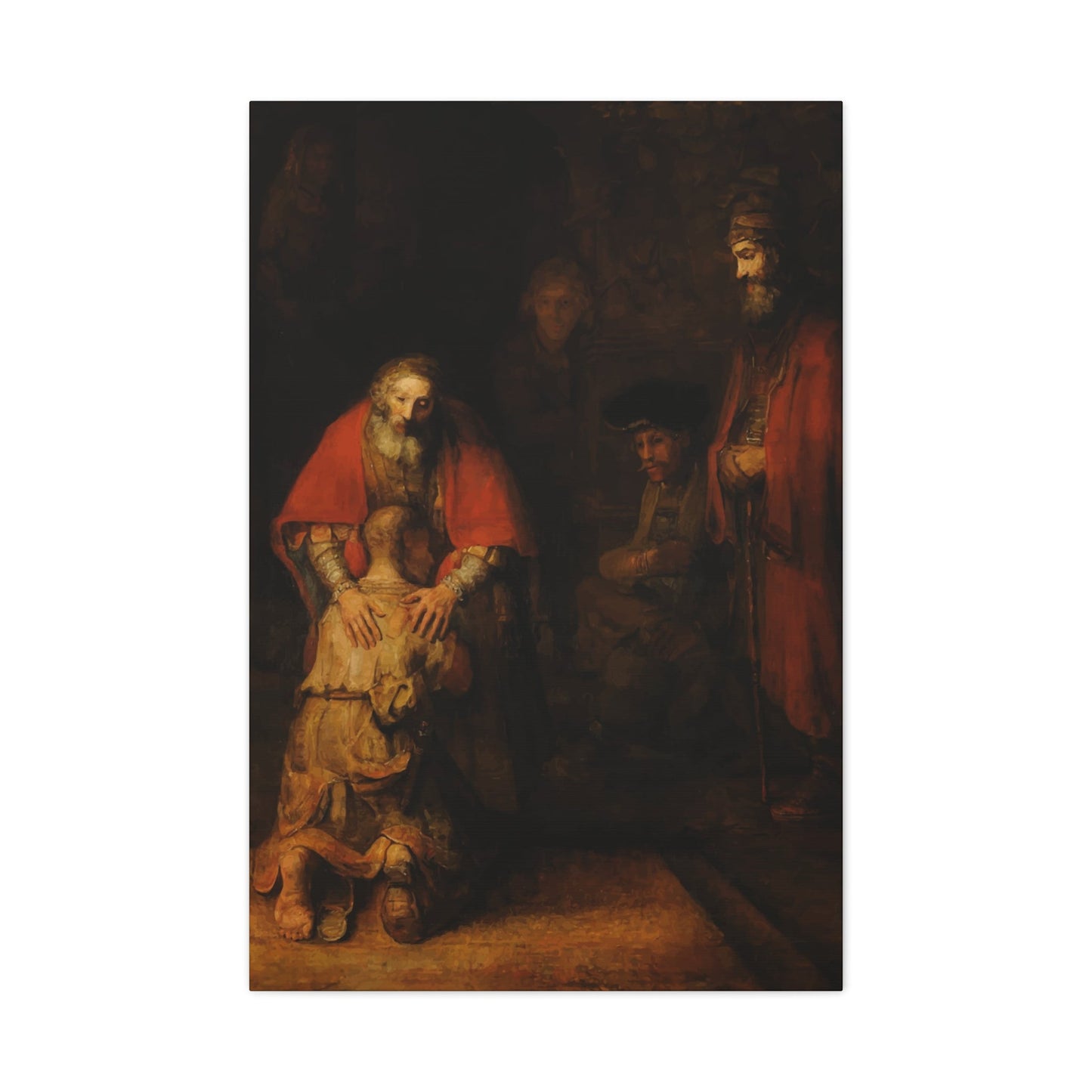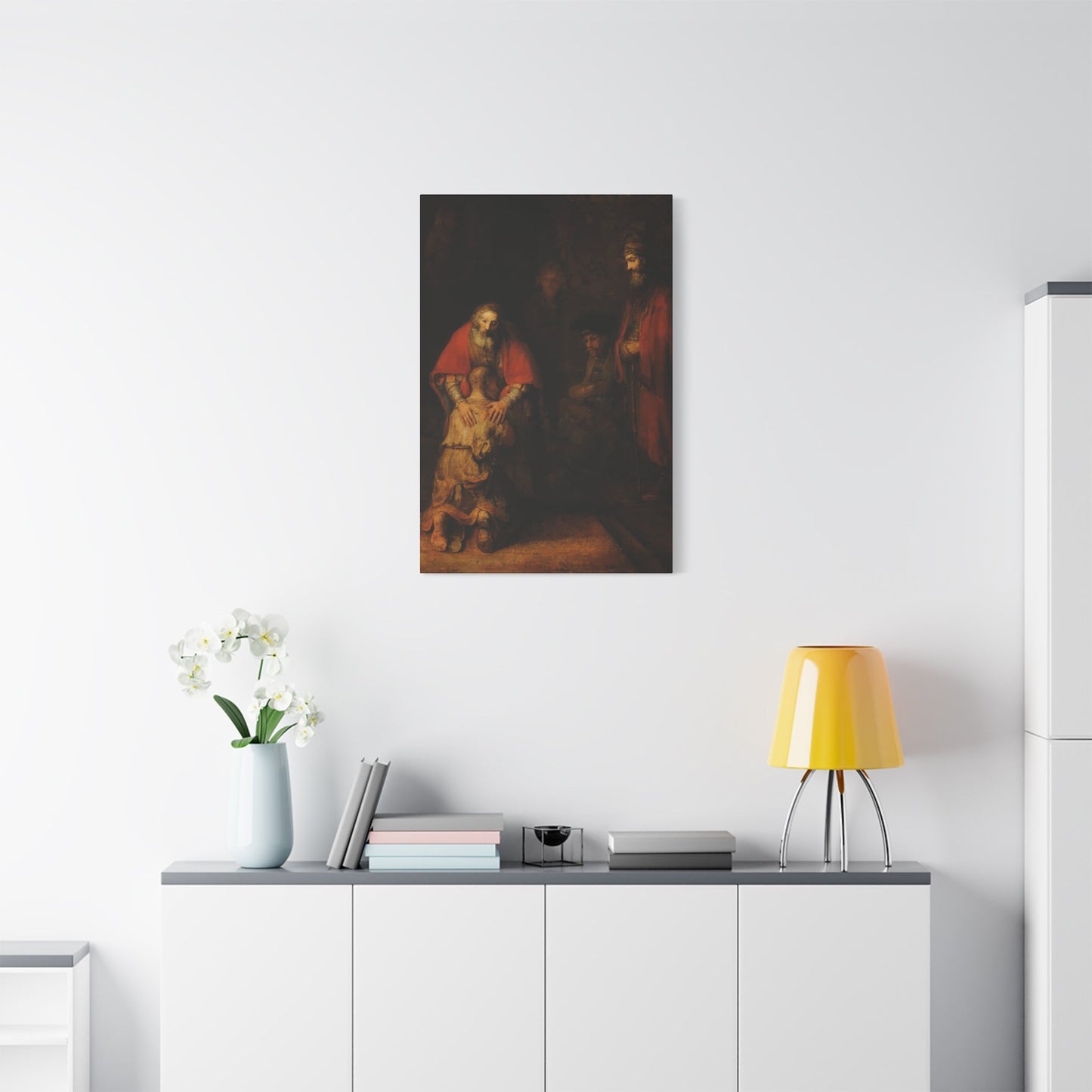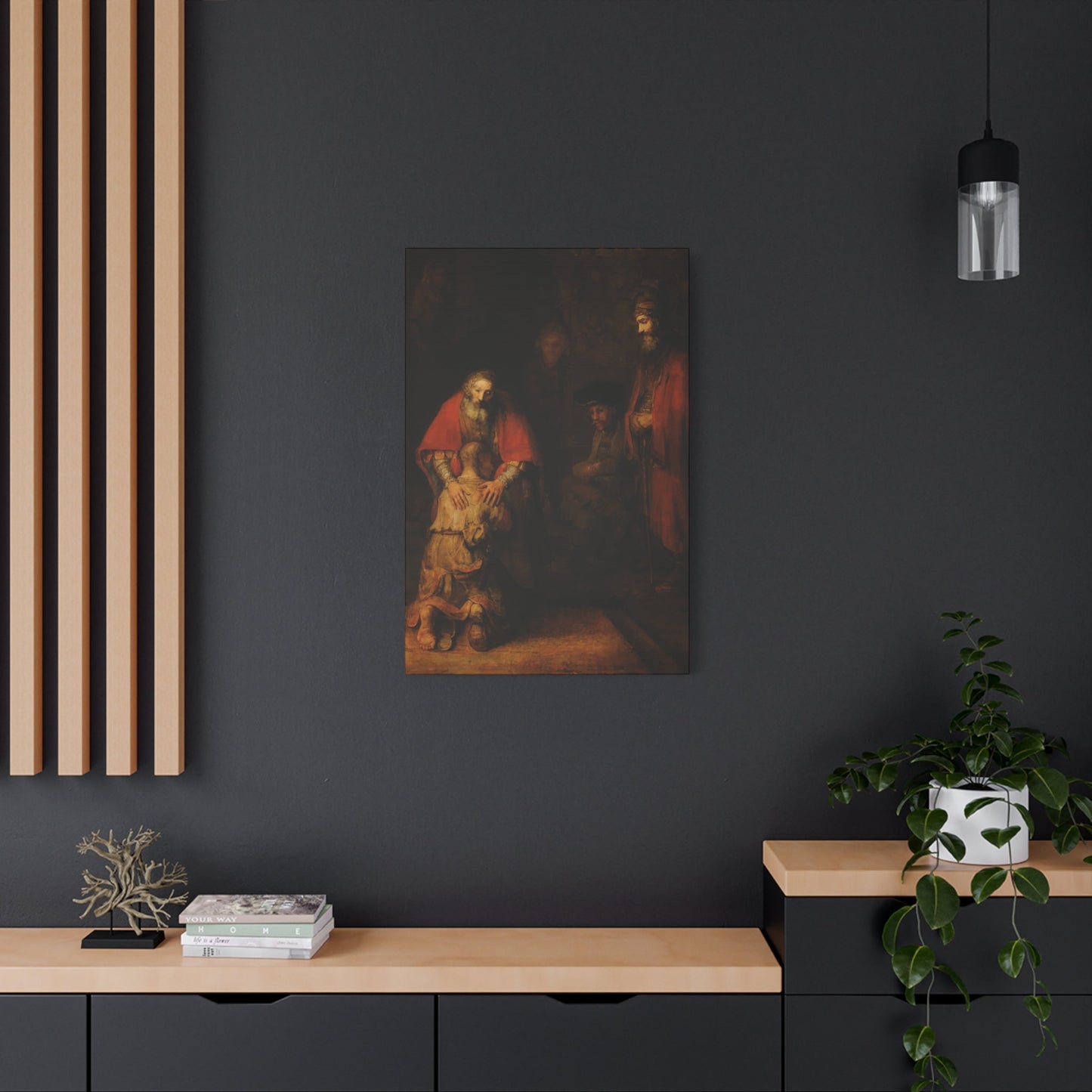The Impact of Scale: Choosing the Right Size of Rijin Wall art for Your Space
The world of home decoration has evolved dramatically over recent years, with canvas prints and artistic wall displays becoming the cornerstone of contemporary home styling. Whether you're seeking to refresh a single room or completely reimagine your living environment, the right selection of artwork can create profound transformations that reflect your personality while enhancing the overall aesthetic appeal of your home.
Canvas prints have emerged as the preferred choice for homeowners and decorating enthusiasts who appreciate both quality and versatility. These artistic pieces offer an affordable yet sophisticated approach to home decoration, allowing individuals to express their unique taste while creating environments that inspire and comfort. The beauty of canvas artwork lies in its ability to serve as both a focal point and a subtle enhancement, depending on the piece selected and how it's incorporated into the existing decor.
Modern homeowners are increasingly recognizing that artwork is not merely decorative but serves as an extension of their personality and lifestyle choices. The selection process involves considering various factors including color schemes, artistic styles, sizing requirements, and the emotional response each piece evokes. This comprehensive exploration will guide you through every aspect of selecting, purchasing, and displaying canvas prints that will elevate your home's aesthetic appeal.
The impact of carefully chosen artwork extends beyond mere visual enhancement. Studies have shown that thoughtfully selected pieces can influence mood, productivity, and overall well-being. This psychological aspect of home decoration has led to increased interest in curating collections that not only look beautiful but also contribute to creating harmonious living environments that support mental health and emotional balance.
Most Popular Canvas Print Selections
The contemporary market for canvas artwork showcases an incredible diversity of styles, themes, and artistic approaches that cater to virtually every taste preference. Understanding current trends and timeless classics helps in making informed decisions that will remain relevant and appealing for years to come.
Abstract compositions continue to dominate the popularity charts, offering viewers the freedom to interpret meaning and find personal connections with the artwork. These pieces work exceptionally well in modern homes because they complement various color schemes and decorating styles without overwhelming the existing aesthetic. The beauty of abstract art lies in its versatility and the way it can adapt to different lighting conditions throughout the day, creating an ever-changing visual experience.
Nature-inspired themes represent another category that consistently attracts buyers seeking to bring elements of the outdoors into their homes. Landscape scenes, botanical illustrations, and wildlife portraits offer a sense of tranquility and connection to the natural world that many people crave in their increasingly urbanized lives. These pieces work particularly well in homes where residents want to create calming, restorative environments that serve as sanctuaries from daily stress.
Contemporary portraiture has also gained significant traction among art enthusiasts who appreciate the human element in their home decor. These pieces range from realistic representations to stylized interpretations, offering options for those who prefer traditional approaches as well as those drawn to more experimental techniques. Portrait artwork can serve as conversation starters while adding sophistication and cultural depth to any room.
Geometric patterns and architectural-inspired designs appeal to homeowners who favor clean lines and structured compositions. These pieces complement modern furniture and minimalist decorating approaches while adding visual interest without creating chaos or clutter. The mathematical precision often found in geometric art can create a sense of order and balance that many people find psychologically comforting.
Typography-based artwork has experienced a renaissance in recent years, with inspirational quotes, literary excerpts, and meaningful phrases transformed into visually striking pieces. This category allows homeowners to incorporate personal mantras, favorite sayings, or motivational messages into their decor while maintaining sophisticated aesthetic standards.
Reasons Canvas Artwork Enhances Every Environment
Canvas prints possess unique characteristics that make them superior to other forms of artwork for residential applications. The material itself offers advantages in terms of durability, visual impact, and versatility that contribute to their widespread popularity among decorating enthusiasts and professional designers alike.
The texture of canvas material adds dimensional quality to printed images that cannot be achieved with paper or other flat surfaces. This textural element creates visual interest and depth that draws viewers closer to examine details while providing a tactile quality that enhances the overall sensory experience of the artwork. The slight grain and weave patterns visible in quality canvas materials contribute to the handcrafted appearance that many homeowners desire.
Color reproduction on canvas material achieves remarkable vibrancy and accuracy that brings digital prints to life in ways that exceed expectations. Modern printing technologies combined with high-quality canvas materials result in artwork that maintains its visual impact for years without fading or deteriorating. The absorbent nature of canvas allows inks to penetrate deeply, creating rich, saturated colors that appear more vivid than those achieved on other materials.
The lightweight nature of canvas prints makes them practical for homeowners who may want to rearrange or relocate their artwork periodically. Unlike heavy framed pieces or traditional oil paintings, canvas prints can be easily moved without requiring specialized hanging hardware or professional installation assistance. This flexibility appeals to renters and homeowners who enjoy refreshing their decor regularly.
Canvas prints offer exceptional value compared to original artwork or limited edition pieces while still providing the visual impact and aesthetic appeal that homeowners seek. This affordability factor allows individuals to build substantial art collections without making prohibitive financial commitments, enabling experimentation with different styles and themes until finding the perfect combination.
The printing process used for quality canvas artwork allows for customization options that traditional art forms cannot match. Homeowners can request specific sizing, cropping adjustments, or even color modifications to ensure that chosen pieces integrate seamlessly with their existing decor. This level of personalization ensures that each piece serves not only as decoration but as a carefully considered element of the overall design scheme.
Maintenance requirements for canvas prints remain minimal compared to other art forms, making them practical choices for busy households. Regular dusting and occasional cleaning with appropriate materials keep these pieces looking fresh and vibrant without requiring professional restoration services or specialized care products.
Elegant Purple Floral Designs and Tranquil Aesthetic Approaches
The psychological impact of color in home environments cannot be overstated, and purple tones combined with floral motifs create particularly powerful effects that promote relaxation and emotional well-being. This color palette has gained recognition among decorating professionals for its ability to create sophisticated yet calming environments that appeal to a wide range of personality types.
Purple hues encompass a broad spectrum ranging from deep, rich eggplant tones to soft lavender shades, each offering different emotional and visual effects. The deeper purples convey luxury, creativity, and spiritual depth while lighter variations promote tranquility, healing, and gentle energy. Understanding these psychological associations helps homeowners select pieces that will contribute to their desired emotional atmosphere.
Floral motifs paired with purple color schemes create artwork that feels both timeless and contemporary, appealing to traditionalists while satisfying those who prefer more modern aesthetic approaches. The organic shapes and natural patterns found in floral designs provide visual softness that balances the boldness of purple tones, resulting in compositions that feel harmonious and well-balanced.
The versatility of purple floral artwork allows for integration into various decorating styles, from romantic shabby chic approaches to sleek contemporary designs. These pieces can serve as subtle accent elements or bold focal points, depending on the intensity of the colors and the scale of the floral patterns. This adaptability makes purple floral prints valuable investments that can transition through different decorating phases.
Botanical accuracy in floral artwork appeals to nature enthusiasts and gardening aficionados who appreciate detailed representations of specific flower varieties. These scientifically-inspired pieces combine artistic beauty with educational value, creating conversation pieces that reflect the owner's interests and knowledge while contributing to the room's aesthetic appeal.
Stylized floral interpretations offer alternatives for homeowners who prefer more abstract or contemporary approaches to nature-inspired art. These pieces maintain the emotional benefits associated with floral imagery while providing modern visual appeal that complements contemporary furniture and decorating accessories.
The calming effects of purple floral artwork make these pieces particularly suitable for bedrooms, meditation areas, and other locations where relaxation and stress reduction are priorities. The combination of nature imagery with soothing colors creates environments that support rest and rejuvenation, contributing to overall health and well-being.
Seasonal variations in purple floral artwork allow homeowners to refresh their decor throughout the year while maintaining consistency in color schemes and themes. Spring compositions featuring lilacs and crocuses can transition to summer pieces showcasing lavender fields, followed by autumn arrangements highlighting purple chrysanthemums and asters.
Diverse Artistic Styles from Contemporary Abstract to Classical Realism
The contemporary art market offers an unprecedented variety of artistic styles and approaches, providing homeowners with options that range from cutting-edge contemporary expressions to time-honored classical techniques. Understanding these different approaches helps in making informed selections that align with personal preferences and decorating goals.
Abstract expressionism continues to influence contemporary canvas artwork, with artists creating pieces that emphasize emotional expression over literal representation. These works often feature bold brushstrokes, dynamic compositions, and color combinations that evoke specific moods or feelings rather than depicting recognizable subjects. Abstract pieces work exceptionally well in modern homes where they can serve as sophisticated focal points that complement contemporary furniture and architectural elements.
Photorealistic artwork represents the opposite end of the artistic spectrum, featuring incredibly detailed representations that often surpass the clarity of photography itself. These pieces appeal to viewers who appreciate technical skill and precision while enjoying the familiarity of recognizable subjects. Photorealistic artwork can create dramatic impact in rooms where homeowners want to showcase appreciation for artistic mastery and attention to detail.
Impressionistic influences appear in contemporary canvas prints through soft, ethereal compositions that capture the essence of subjects rather than precise details. This approach creates artwork that feels romantic and dreamlike, appealing to homeowners who prefer subtle beauty over bold statements. Impressionistic pieces work particularly well in bedrooms and other personal areas where gentle, soothing imagery supports relaxation.
Mixed media approaches combine traditional painting techniques with digital manipulation, photography, and other artistic elements to create unique compositions that bridge the gap between different art forms. These innovative pieces appeal to homeowners who appreciate experimental approaches and want artwork that reflects contemporary artistic evolution.
Cultural and ethnic artistic traditions provide inspiration for canvas prints that celebrate global artistic heritage while adapting traditional techniques for contemporary applications. These pieces offer homeowners opportunities to incorporate cultural elements into their decor while supporting appreciation for diverse artistic traditions and techniques.
Street art and graffiti-inspired pieces bring urban energy and contemporary relevance into home environments, appealing to homeowners who want to reflect modern cultural movements and artistic expressions. These pieces often feature bold colors, graphic elements, and social commentary that create conversation pieces while adding edge and personality to conventional decorating schemes.
Surrealistic elements appear in contemporary artwork through unexpected combinations, impossible scenarios, and dreamlike imagery that challenges viewers' perceptions while creating visually striking compositions. These pieces appeal to individuals who appreciate intellectual stimulation and want artwork that encourages contemplation and discussion.
Contemporary Minimalist Artwork for Modern Living
The minimalist movement in home decoration has created increased demand for artwork that embodies simplicity, clean lines, and restrained color palettes while still providing visual interest and aesthetic appeal. Minimalist canvas prints serve as perfect complements to contemporary furniture and architectural elements while maintaining the uncluttered appearance that defines this decorating approach.
Monochromatic compositions form the foundation of minimalist artwork, utilizing variations in tone, texture, and form within limited color schemes to create sophisticated visual experiences. These pieces demonstrate that complexity and interest can be achieved through subtle variations rather than bold contrasts, appealing to homeowners who appreciate refinement and understatement in their decorating choices.
Geometric precision characterizes many minimalist pieces, with artists utilizing mathematical relationships, balanced proportions, and carefully considered spatial arrangements to create compositions that feel both purposeful and calming. The orderly nature of geometric minimalist artwork provides visual stability that many people find psychologically comforting in their home environments.
Negative space plays a crucial role in minimalist compositions, with artists deliberately incorporating empty areas that allow viewers' eyes to rest while emphasizing the importance of what is included rather than what is omitted. This conscious use of emptiness creates artwork that feels spacious and uncluttered, perfectly complementing minimalist decorating philosophies.
Line work and linear elements appear frequently in minimalist canvas prints, with single continuous lines, parallel arrangements, and intersecting patterns creating visual interest through simplicity rather than complexity. These pieces demonstrate the power of reduction and the beauty that can be found in essential elements when presented with careful consideration and artistic skill.
Textural minimalism focuses on surface variations and material qualities rather than color or pattern to create visual appeal. These pieces might feature subtle canvas textures, raised elements, or variations in paint application that create interest through tactile qualities rather than bold visual statements.
Natural elements interpreted through minimalist approaches offer homeowners ways to incorporate nature references without overwhelming their carefully curated aesthetic schemes. Simple plant forms, basic landscape elements, or essential animal shapes provide organic softness within minimalist frameworks.
Zen influences appear in minimalist artwork through compositions that emphasize balance, harmony, and spiritual tranquility. These pieces often draw from Eastern philosophical traditions while adapting those principles for contemporary Western decorating preferences, creating artwork that supports meditation and mindfulness practices.
Optimal Artwork Selections for Living Areas
The living room serves as the primary gathering place for most households, making it essential to select artwork that creates welcoming atmospheres while reflecting the homeowners' personalities and aesthetic preferences. The selection process must consider various factors including viewing distances, lighting conditions, and the need for pieces that work well for both intimate gatherings and larger social events.
Scale considerations become particularly important in living areas where artwork must be large enough to maintain visual impact from typical seating distances while avoiding overwhelming the available wall area. Multiple smaller pieces can work together to create gallery-style arrangements, while single large canvases can serve as dramatic focal points that anchor entire room designs.
Color coordination between canvas prints and existing furniture, textiles, and accessories ensures that new artwork integrates seamlessly into established decorating schemes while potentially introducing accent colors that enhance the overall palette. The interplay between artwork colors and room elements creates cohesive environments that feel intentionally designed rather than randomly assembled.
Subject matter selection for living areas should consider the diverse activities that occur in these locations, from casual relaxation to formal entertaining. Artwork that sparks conversation while remaining appropriate for all age groups and social situations provides the flexibility that living areas require. Abstract pieces, landscape scenes, and cultural artwork often work well in these applications.
Lighting interactions between natural and artificial light sources affect how canvas artwork appears throughout different times of day and various lighting conditions. Understanding these relationships helps in selecting pieces that maintain their visual appeal regardless of changing environmental conditions while potentially enhancing the overall lighting design of the room.
Furniture relationships require careful consideration to ensure that artwork complements seating arrangements, coffee tables, and entertainment centers without competing for attention or creating visual conflicts. The goal is to create harmonious relationships where each element supports the others while contributing to the overall aesthetic success of the room.
Seasonal flexibility becomes important in living areas where homeowners may want to refresh their decor periodically without making major changes to furniture or architectural elements. Selecting artwork that works well with different accent colors and seasonal decorating accessories provides long-term versatility and investment value.
Multiple viewing angles must be considered in living areas where artwork will be seen from various seating positions and entry points. Pieces that maintain their visual appeal from different perspectives ensure that all users of the room can appreciate the artwork regardless of where they choose to sit or how they move through the area.
Bedroom Canvas Art Concepts for Personal Sanctuaries
Bedrooms require careful consideration when selecting artwork because these private retreats serve multiple functions including rest, relaxation, romance, and personal reflection. The artwork chosen for bedroom environments should support these diverse needs while creating atmospheres that promote well-being and emotional comfort.
Color psychology plays a particularly important role in bedroom artwork selection, with certain hues promoting relaxation and sleep while others might stimulate energy and alertness. Understanding these relationships helps homeowners choose pieces that support their sleep patterns and overall bedroom functionality while maintaining aesthetic appeal throughout different times of day.
Size proportions in bedroom artwork require different considerations than those used in public areas, with intimate viewing distances allowing for appreciation of smaller details while still requiring sufficient scale to create visual impact from bed positions. The relationship between artwork size and bed dimensions creates important visual balance that affects the overall room harmony.
Personal significance becomes more important in bedroom artwork selection because these private areas provide opportunities for displaying pieces that hold special meaning or emotional connection. Family photographs transformed into artistic presentations, meaningful quotes, or representations of important life experiences create personalized environments that reflect individual histories and values.
Romantic considerations influence bedroom artwork choices for couples who want to create environments that support intimacy while reflecting both partners' preferences. Finding pieces that appeal to different aesthetic sensibilities while maintaining romantic atmospheres requires careful consideration and often involves compromise and communication.
Lighting relationships in bedrooms involve complex interactions between natural light, overhead fixtures, bedside lamps, and accent lighting that affect how artwork appears during different activities and times of day. Understanding these relationships helps in selecting pieces that maintain their appeal whether viewed in bright daylight or soft evening illumination.
Textural elements in bedroom artwork can contribute to the overall sensory experience of these intimate areas, with canvas materials providing subtle tactile qualities that enhance the cozy, comfortable feelings that bedrooms should evoke. The physical presence of artwork contributes to the overall atmosphere beyond just visual impact.
Thematic consistency in bedroom artwork helps create cohesive environments that support the room's primary functions while reflecting personal style preferences. Whether focusing on nature themes, abstract compositions, or cultural elements, maintaining consistency creates harmonious atmospheres that promote relaxation and personal comfort.
Professional Workspace Enhancement Through Calming Artwork
Modern work environments increasingly recognize the importance of visual elements in supporting productivity, reducing stress, and creating pleasant atmospheres that benefit both employees and visitors. Canvas artwork in office settings must balance professional appropriateness with aesthetic appeal while contributing to environments that support focus and creativity.
Productivity enhancement through artwork involves selecting pieces that provide visual interest without becoming distracting or overwhelming during periods of intense concentration. Studies have shown that certain types of visual stimuli can improve cognitive performance while others may hinder focus, making careful selection crucial for workspace applications.
Color temperature considerations affect how artwork impacts mood and energy levels throughout typical work days, with cooler tones often promoting focus and alertness while warmer hues encourage creativity and social interaction. Understanding these relationships helps in creating office environments that support various work activities and professional requirements.
Scale appropriateness in office artwork requires consideration of viewing distances, room dimensions, and the need for pieces that create impact without dominating professional environments. The artwork should enhance rather than compete with the primary functions of the workplace while contributing to overall aesthetic quality.
Subject matter selection for professional environments must consider diverse audiences including employees, clients, and visitors while maintaining appropriate content that reflects organizational values and professional standards. Abstract pieces, landscape photography, and cultural artwork often provide safe yet sophisticated options for workplace applications.
Brand reflection through artwork selection allows organizations to reinforce their identity and values while creating environments that support their professional mission. The visual choices made in office artwork contribute to overall brand perception and can influence how employees and visitors perceive the organization's culture and priorities.
Maintenance considerations become particularly important in office environments where artwork may be exposed to higher traffic, varied lighting conditions, and different cleaning requirements than residential settings. Canvas prints offer practical advantages in these applications due to their durability and relatively simple care requirements.
Flexible arrangement options allow office artwork to adapt to changing organizational needs, space reconfigurations, and evolving aesthetic preferences without requiring complete replacement of existing pieces. This adaptability provides long-term value and supports organizational growth and change.
Creating Impressive First Impressions with Entry Area Art
The entryway serves as the transition zone between exterior and interior environments, making it crucial to select artwork that creates positive first impressions while establishing the aesthetic tone for the entire home. Entry area artwork must work effectively with limited viewing time while creating lasting impact that welcomes guests and reflects the homeowners' personality.
Impact creation in entryways requires artwork that commands attention immediately while maintaining sophistication and appropriateness for diverse audiences. The pieces selected for these areas often become the first artistic elements that visitors encounter, making them important representations of the homeowners' taste and cultural appreciation.
Durability requirements in entry areas may be more demanding than other home locations due to temperature variations, humidity changes, and higher traffic levels. Canvas prints offer advantages in these applications due to their resilience and ability to maintain appearance despite environmental challenges that might affect other art forms.
Lighting challenges in entryways often involve complex interactions between natural light from windows or glass doors, overhead fixtures, and accent lighting that create varying conditions throughout the day. Selecting artwork that maintains visual appeal under these changing conditions requires understanding how different lighting affects color perception and visual impact.
Scale considerations in entryways must account for the typically limited wall space available while ensuring that chosen pieces create sufficient impact to serve their welcoming function effectively. Single large pieces often work better than multiple smaller ones in these applications where simplicity and immediate impact are priorities.
Style coordination between entry artwork and the aesthetic approaches used in adjacent rooms helps create smooth transitions and cohesive design flow throughout the home. The entryway artwork should complement rather than conflict with the decorating themes that visitors will encounter as they move through different areas.
Seasonal adaptability allows entryway artwork to reflect changing seasons or holidays without requiring complete replacement, providing opportunities for homeowners to refresh their first impression elements while maintaining consistency in overall aesthetic approach. This flexibility adds interest and demonstrates attention to detail.
Practical considerations in entryway artwork selection include resistance to temperature fluctuations, protection from direct sunlight that might cause fading, and positioning that avoids interference with doors, coat closets, or other functional elements while maintaining optimal viewing angles.
Botanical Prints for Serene Bathroom Environments
Bathroom environments present unique challenges and opportunities for artwork placement, with the combination of humidity, temperature variations, and intimate settings requiring careful consideration of both practical and aesthetic factors. Floral and botanical prints offer particular advantages in these applications due to their natural associations with cleanliness, growth, and tranquility.
Humidity resistance becomes a primary consideration when selecting artwork for bathroom environments, with canvas materials offering advantages over paper-based prints that might be more susceptible to moisture-related damage. Understanding the protective treatments and materials that enhance durability in humid conditions helps ensure long-term satisfaction with artwork investments.
Spa-like atmosphere creation through botanical artwork transforms functional bathroom areas into relaxing retreat environments that support well-being and stress reduction. The psychological benefits of nature imagery combined with the private, intimate nature of bathroom settings create opportunities for daily moments of tranquility and connection with natural elements.
Color coordination in bathroom botanical artwork should consider existing tile, fixture, and accessory colors while potentially introducing natural tones that enhance the overall aesthetic appeal. Green plant imagery, soft floral colors, and earth-tone backgrounds often work well in bathroom applications while maintaining the fresh, clean feeling that these areas require.
Size considerations for bathroom artwork must account for the typically smaller wall areas available while ensuring that chosen pieces create sufficient visual impact to transform the atmosphere effectively. Multiple smaller pieces arranged in groupings often work better than single large canvases in bathroom applications where wall space may be limited by fixtures and functional elements.
Placement strategies for bathroom artwork require consideration of privacy needs, steam exposure, and viewing angles from different positions within the room. Strategic placement can enhance the bathing experience while avoiding areas where excessive moisture or heat might affect the artwork over time.
Thematic consistency in bathroom botanical artwork helps create cohesive environments that support the room's primary functions while adding aesthetic value that transforms purely functional areas into pleasant, welcoming retreats that homeowners actually enjoy using.
Maintenance requirements for bathroom artwork may be more demanding than those in other home areas, making it important to select pieces and protective treatments that can withstand occasional cleaning and the ongoing effects of humidity without losing their visual appeal or structural integrity.
Canvas Artwork as Thoughtful Gifts for Special Occasions
The tradition of giving artwork as gifts has evolved to embrace canvas prints as sophisticated, meaningful options that demonstrate thoughtfulness while providing recipients with lasting decorative elements for their homes. Understanding how to select appropriate pieces for different recipients and occasions enhances the gift-giving experience for both giver and receiver.
Occasion appropriateness requires understanding the significance of different celebrations and life events while selecting artwork that reflects the importance of the moment without creating obligations or expectations that might burden the recipient. Wedding gifts, housewarming presents, and milestone celebration artwork should enhance the recipient's life while honoring the special occasion.
Personal preference consideration becomes crucial when selecting artwork gifts because individual taste varies significantly and pieces that appeal to the giver may not align with the recipient's aesthetic preferences. Research into the recipient's existing decor, favorite colors, and artistic interests helps ensure that gifted artwork will be appreciated and displayed rather than stored away.
Size speculation for artwork gifts requires understanding the recipient's living situation, available wall space, and typical scale preferences without having the opportunity to measure or assess their home environment directly. Medium-sized pieces often provide the best balance between impact and flexibility while allowing recipients to find appropriate placement options.
Cultural sensitivity in artwork gift selection ensures that chosen pieces respect the recipient's background, beliefs, and cultural preferences while avoiding imagery or themes that might be inappropriate or offensive. Understanding these considerations demonstrates respect and thoughtfulness that enhances the gift-giving experience.
Customization opportunities in canvas print gifts allow for personalization that makes the present unique and specifically meaningful to the recipient. Custom sizing, personal photographs, meaningful quotes, or specially commissioned artwork creates one-of-a-kind gifts that cannot be replicated or purchased elsewhere.
Presentation considerations for artwork gifts involve packaging, delivery methods, and timing that protect the piece while creating positive unveiling experiences. Proper packaging prevents damage while building anticipation, and thoughtful presentation enhances the emotional impact of receiving the gift.
Long-term value in artwork gifts extends beyond immediate appreciation to provide recipients with decorative elements that may appreciate over time while serving as lasting reminders of the relationship and occasion that prompted the gift. This enduring quality makes artwork particularly meaningful as gift choices.
Determining Appropriate Artwork Dimensions for Different Areas
The relationship between artwork size and room proportions significantly affects visual impact and aesthetic success, making it essential to understand general guidelines while adapting them to specific situations and personal preferences. Proper sizing ensures that chosen pieces enhance rather than overwhelm or disappoint in their intended locations.
Mathematical relationships between artwork dimensions and furniture pieces provide starting points for size selection, with common guidelines suggesting that artwork above sofas should span approximately two-thirds of the furniture width while maintaining proportion to ceiling height and overall room scale. These guidelines provide frameworks rather than absolute rules that must be adapted to individual situations.
Room proportion considerations extend beyond simple mathematical relationships to encompass ceiling height, available wall space, competing visual elements, and desired emphasis levels. Large rooms with high ceilings can accommodate oversized artwork that would overwhelm smaller areas, while intimate rooms benefit from more modest sizing that maintains comfortable visual balance.
Multiple piece arrangements allow for creative sizing solutions where several smaller canvases work together to create the visual impact of a single large piece while providing flexibility in arrangement and easier handling. Gallery wall approaches, diptych presentations, and series installations offer alternatives to single large pieces while maintaining aesthetic coherence.
Viewing distance relationships affect how artwork size translates to visual impact, with pieces intended for close viewing requiring different size considerations than those meant to be appreciated from across large rooms. Understanding typical viewing distances in different areas helps in selecting sizes that provide optimal visual experience for their intended locations.
Budget considerations often influence artwork size selection, with larger pieces typically commanding higher prices while smaller options may require multiple purchases to achieve desired visual impact. Understanding these relationships helps in making informed decisions that balance aesthetic goals with financial constraints while maximizing satisfaction with artwork investments.
Flexibility planning involves considering future decorating changes, potential relocations, and evolving preferences that might affect how well specific artwork sizes continue to work in changing circumstances. Moderate sizing often provides the best long-term value by adapting to various situations while maintaining visual effectiveness.
Installation requirements vary with artwork size, with larger pieces potentially requiring specialized hanging hardware, professional installation assistance, or structural considerations that affect both initial costs and long-term placement options. Understanding these practical implications helps in making informed size selections.
Framed Versus Unframed Canvas Artwork Options
The decision between framed and unframed canvas presentations involves multiple considerations including aesthetic preferences, budget constraints, protection requirements, and intended placement locations. Each approach offers distinct advantages and characteristics that appeal to different decorating philosophies and practical needs.
Aesthetic impact differs significantly between framed and unframed presentations, with frames adding formal structure and traditional appeal while unframed canvases provide contemporary, streamlined appearances that emphasize the artwork itself rather than decorative borders. Understanding these aesthetic differences helps in selecting approaches that align with overall decorating goals and personal style preferences.
Protection benefits of framing include edge reinforcement, surface protection, and structural support that can extend artwork longevity while providing defenses against accidental damage. Frames also create defined boundaries that separate artwork from wall surfaces, potentially preventing direct contact that might affect either element over time.
Cost considerations typically favor unframed presentations due to the eliminated expense of frame materials, assembly, and professional framing services. However, the long-term protection and aesthetic enhancement provided by quality framing may justify the additional investment depending on the artwork's value and intended placement location.
Installation differences between framed and unframed canvases affect hanging requirements, with frames often providing standardized mounting systems while unframed pieces may require specialized hardware designed for canvas presentations. Understanding these installation requirements helps in planning artwork placement and budgeting for necessary accessories.
Maintenance requirements vary between framed and unframed presentations, with frames potentially requiring periodic cleaning and adjustment while protecting the canvas itself. Unframed pieces allow for direct access to the artwork surface but may be more vulnerable to dust accumulation and accidental contact that could affect appearance over time.
Style flexibility tends to favor unframed presentations that adapt more easily to changing decorating schemes and furniture arrangements without the visual weight and style commitment that frames represent. However, frames can also be changed or updated to reflect evolving aesthetic preferences while maintaining the same core artwork.
Professional appearance considerations often favor framed presentations in formal settings where traditional presentation methods are expected or preferred. Business environments, traditional homes, and formal entertaining areas may benefit from the added sophistication and finished appearance that quality framing provides.
Personalized Artwork Options for Individual Expression
The growing availability of customization services for canvas artwork allows homeowners to create unique pieces that reflect personal experiences, memories, and aesthetic preferences while maintaining professional quality and artistic standards. These personalized options provide alternatives to mass-produced artwork while ensuring perfect alignment with individual decorating goals.
Photography transformation services convert personal images into artistic canvas presentations that preserve meaningful memories while creating sophisticated decorative elements. Family photographs, travel images, and special event documentation can be enhanced through artistic filters, size adjustments, and presentation methods that elevate them beyond simple photo printing.
Custom sizing capabilities ensure that personalized artwork fits perfectly into intended locations without requiring compromises in placement or visual impact. This precision in dimensional specifications provides advantages over standard-sized pieces that may not align perfectly with available wall space or furniture relationships.
Text integration allows for incorporation of meaningful quotes, family names, important dates, or personal mantras into artistic compositions that combine visual appeal with textual significance. Typography selection, layout design, and color coordination ensure that text elements enhance rather than detract from overall artistic quality.
Color customization services can adjust artwork hues to match specific decorating schemes, favorite colors, or existing room elements while maintaining artistic integrity and visual appeal. This capability ensures that personalized pieces integrate seamlessly into established decorating themes without requiring additional room changes.
Artistic style adaptation allows personal images to be interpreted through various artistic approaches including watercolor effects, oil painting simulation, sketching techniques, and abstract interpretations that transform familiar subjects into unique artistic expressions while maintaining recognizable elements.
Multiple format options for personalized artwork include single large pieces, multi-panel presentations, series collections, and coordinated groupings that provide flexibility in arrangement and installation while maintaining thematic consistency throughout the presentation.
Quality assurance in personalized artwork involves understanding production methods, material quality, and finishing techniques that ensure custom pieces meet professional standards while providing durability and longevity comparable to commercial artwork options.
Limited Edition Artwork and Collectible Value
The concept of limited edition artwork provides collectors and decorating enthusiasts with opportunities to acquire pieces that offer both aesthetic appeal and potential investment value through restricted availability and documented authenticity. Understanding the factors that contribute to limited edition value helps in making informed acquisition decisions.
Authenticity documentation includes certificates of authenticity, artist signatures, edition numbering, and production records that establish the legitimacy and provenance of limited edition pieces. These documents provide important verification of the artwork's status and contribute to its long-term value and marketability.
Edition size significantly affects both exclusivity and potential value appreciation, with smaller editions typically commanding higher prices and offering greater scarcity appeal. Understanding how edition sizes relate to pricing and future value helps collectors make informed decisions about acquisition priorities and investment strategies.
Artist reputation influences limited edition value through established market presence, critical recognition, and collector demand for works by specific creators. Researching artist backgrounds, exhibition histories, and market performance provides insights into the potential long-term value of limited edition acquisitions.
Production quality in limited edition artwork involves understanding printing methods, material specifications, and finishing techniques that affect both immediate visual appeal and long-term durability. Superior production standards contribute to value retention while ensuring that pieces maintain their aesthetic quality over time.
Market trends in limited edition artwork reflect changing collector preferences, emerging artists, and evolving aesthetic movements that influence demand and pricing. Staying informed about these trends helps collectors identify opportunities while understanding factors that might affect future value appreciation.
Display considerations for limited edition artwork may involve enhanced protection measures, specialized lighting, and careful placement that preserves condition while allowing for appreciation and enjoyment. Proper display methods contribute to value retention while maximizing the decorative benefits of ownership.
Insurance and documentation requirements for valuable limited edition pieces may exceed those needed for standard decorative artwork, making it important to understand coverage options and record-keeping responsibilities that protect both financial investments and artistic collections.
Conclusion
Choosing the right size of Rijin wall art is a crucial decision that significantly impacts the overall harmony and aesthetic of your space. Scale determines how well the artwork interacts with the room’s dimensions, furniture, and other decorative elements. When thoughtfully selected, the perfect-sized piece enhances the visual balance, draws the eye appropriately, and elevates the atmosphere—turning your walls into captivating focal points that reflect both style and intention.
Too small a piece can feel lost or insignificant on a large wall, diminishing its impact and leaving the space feeling incomplete. Conversely, overly large art may overwhelm a room, creating visual clutter or imbalance that distracts rather than delights. Understanding the scale of your space, the wall area available, and the distance from which the artwork will be viewed helps you make a choice that complements rather than competes with your surroundings.
Rijin wall art, with its distinctive designs and textures, offers versatile options that can suit various room sizes and styles. For intimate spaces such as bedrooms or cozy reading nooks, smaller to medium-sized pieces can add charm and detail without overpowering. Larger, dramatic pieces work beautifully in open living areas, dining rooms, or entryways, where they can command attention and set the tone for the entire room.
Moreover, the impact of scale extends beyond aesthetics—it influences the emotional experience of a space. Well-proportioned art creates a sense of harmony and cohesion that feels inviting and thoughtfully curated. It also guides how you move through the room and engage with your environment.
In conclusion, understanding and applying the principles of scale when choosing Rijin wall art transforms your décor from ordinary to extraordinary. Selecting the right size ensures your art becomes an integral part of your space’s character, enhancing both visual appeal and personal expression with perfect balance.













